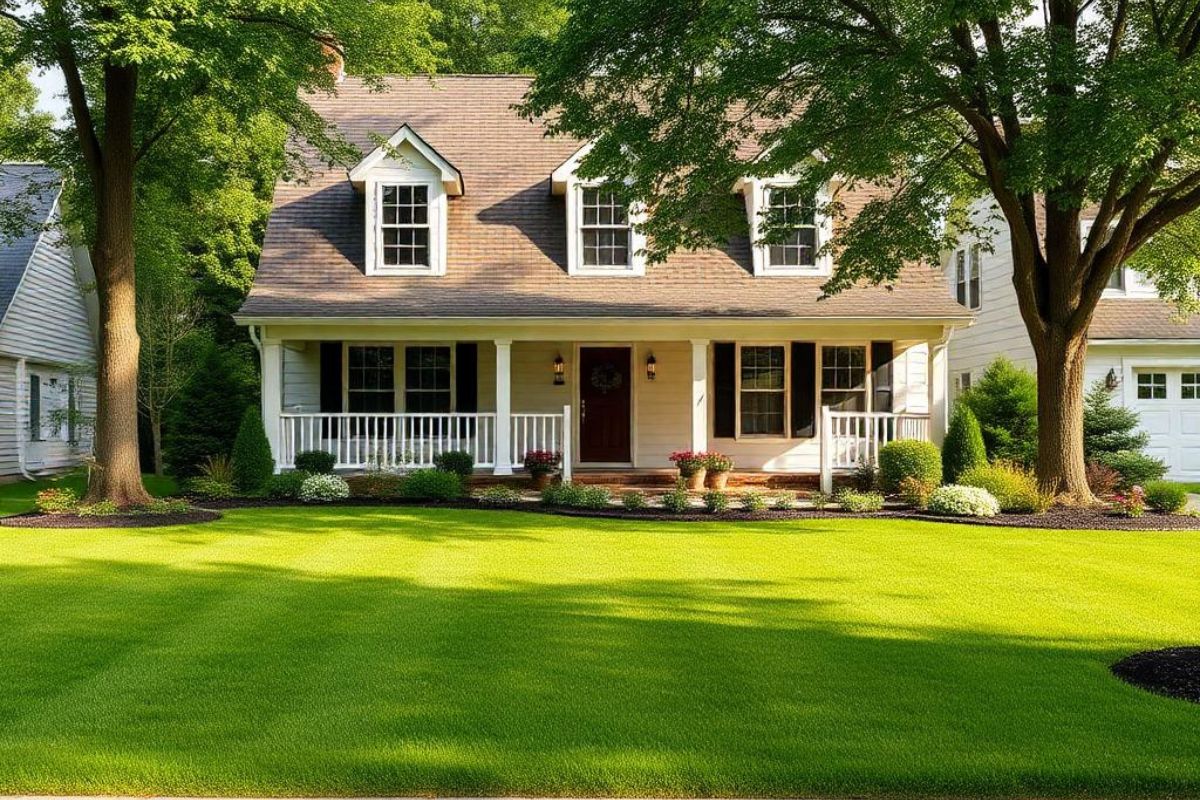Design Your Dream Tiny Home
Creating your dream tiny home is an exercise in imagination and practicality, embracing the balance between individuality and efficiency. As you embark on this journey, you have the opportunity to explore innovative tiny house design ideas that reflect your personal style while maximizing function in limited space. Whether you're interested in stationary affordable tiny homes or a versatile tiny house on wheels, your palette includes diverse tiny home designs tailored to your needs. Tiny house interior designs offer clever solutions for storage and comfort, proving that limited space doesn't mean limited possibilities. Incorporating the right tiny home construction plans will guide you through how to build a tiny house that meets your vision. For those seeking ease, best tiny house kits provide a straightforward start, complete with essential components. To ensure your design serves all aspects of tiny house living, utilize comprehensive tiny home blueprints to avoid overlooking important features. Approaching your project with detailed, well-thought-out plans elevates your tiny house from a mere dream to a tangible reality, reflecting your personality and lifestyle within its cozy walls.

Benefits of Living in a Tiny Home
Living in a tiny home offers an intriguing blend of sustainability and simplicity. Embracing tiny house living often leads to a more minimalist lifestyle, where possessions are curated with care. This mode of living is cherished by those who value efficiency in their homes and seek to minimize their environmental footprint. Through thoughtful tiny house interior designs, you find ways to infuse personality into your compact space without sacrificing comfort.
Financially, tiny homes present an affordable alternative to traditional housing. The lower cost of tiny home construction plans and the reduced need for expensive furnishings contribute to significant savings. On one hand, proponents see these affordable tiny homes as a step toward financial freedom, while critics argue the limited space might not be suited for everyone. However, for those willing to adapt, the economic benefits often outweigh the constraints.
Additionally, the versatility of tiny home living on wheels means your residence can follow wherever life takes you. Tiny house on wheels plans offer mobility, allowing you to explore diverse locales without the need to acquiesce to a single setting. For many, this sense of freedom is a compelling benefit, filling life with new experiences and spontaneous adventures. The mobility of tiny homes amplifies their appeal, making them an exciting choice for adventurous spirits.

Choosing the Right Tiny Home Design
Choosing the right tiny home design begins with understanding your personal needs and lifestyle aspirations. With an array of tiny home designs available, each option serves unique preferences, whether you lean towards a sleek modern style or a cozy rustic feel. Tiny house interior designs play a crucial role in ensuring functionality and comfort, allowing you to maximize every square foot with custom-built storage and multi-purpose areas that fit your daily routines.
One of the most frequently asked questions about tiny homes is how to select a design that accommodates your lifestyle. Start by considering the layout—do you need separate spaces for work and relaxation, or can these areas overlap? By reviewing tiny home blueprints, you can visualize spatial arrangements and make informed decisions about flow and usage. This careful planning ensures that your tiny home is both stylish and practical.
When weighing your options, assess the benefits of stationary versus mobile setups. Once you’ve identified your preferred features, you might explore best tiny house kits that offer comprehensive starting points for construction. Whether you're following detailed tiny home construction plans or seeking inspiration from tiny house design ideas, choosing the right design centers on aligning with your unique lifestyle requirements and aspirations for tiny house living.

DIY Tiny Home Building Tips
Building your own tiny home can be both a rewarding and challenging endeavor. Being informed about the basics of tiny home construction plans will provide a solid foundation as you embark on this DIY journey. Understanding how to build a tiny house begins with budgeting and researching materials that balance quality and cost-effectiveness. Proper financial planning ensures you create an affordable tiny home without compromising on essential features.
When planning your build, consider the advantages and challenges of constructing a stationary versus mobile home. Comparing tiny house on wheels plans to fixed-location designs helps you anticipate specific needs, such as weight distribution for a mobile unit or local zoning requirements for a stationary property. Both options demand meticulous planning and execution, with distinct factors influencing your ultimate decision based on lifestyle preferences.
Utilizing resources like tiny home blueprints adds precision to your project, guiding everything from basic layouts to complex installations. Incorporating innovative tiny house design ideas optimizes space and ensures your home is both practical and aesthetically pleasing. The best tiny house kits can offer a head start, bundling essential components together, and simplifying the construction process. Thoughtful planning and resourcefulness lead to a DIY tiny home that truly reflects your vision and needs for tiny house living.

Legal Considerations for Tiny Homes
Understanding the legal landscape when it comes to tiny homes is a crucial step in your planning process. Navigating zoning laws, building codes, and permits can significantly impact the feasibility of your tiny house project. While affordable tiny homes offer a compact and economical lifestyle, you must ensure compliance with local regulations, which vary widely depending on your location. Researching these laws early helps prevent complications once construction begins.
The legal implications differ for stationary tiny homes versus mobile units. According to recent studies, the flexibility of tiny house on wheels plans can influence residential approval processes, as they often classify as recreational vehicles. This classification sometimes offers more leniency in terms of zoning compared to traditional housing standards. Understanding these distinctions helps inform your choice of structure and location, whether fixed or mobile.
Incorporating scientific insights can elucidate aspects of tiny home living. Research suggests that compact living environments, like those detailed in tiny house interior designs, can affect energy consumption and human behavior in sustainable ways. Recognizing how these scientific findings integrate with your lifestyle choices further emphasizes the importance of a well-considered legal strategy. Aligning your tiny home construction plans with regulatory standards ensures a seamless transition to your tiny home lifestyle.

Innovative Tiny Home Features
Innovative features in tiny homes continue to revolutionize the way people approach minimalist living. These homes incorporate smart space-saving solutions and eco-friendly technologies. With creative integrations such as retractable furniture and adaptable storage, you can maximize utility without sacrificing comfort. Sophisticated tiny home interior designs reflect a move towards utilizing every inch while also embracing sustainable materials, underscoring a commitment to environmental responsibility and efficiency in tiny living spaces.
The current state of tiny home features shows a growing trend towards integrating smart home technologies. From solar panels to smart thermostats, these innovations provide energy efficiency and convenience, enhancing the tiny house living experience. Designers are tailoring tiny house design ideas to include technological advancements, aligning with the broader trend of smart homes. This approach not only makes living in a tiny space more comfortable but also aligns with sustainable living initiatives.
Exploring the best tiny house kits can introduce you to new, trendy features that address both aesthetic and functional aspects. From eco-friendly building materials to water-efficient fixtures, these kits often consolidate the latest innovations, helping you build not only a home but a forward-looking lifestyle. By weaving these features into your tiny home designs, you transform everyday living into an optimized and enriching experience.

How to Maximize Storage in Tiny Homes
Maximizing storage in tiny homes is an art that involves creativity and practicality. With limited space, every nook and cranny can be transformed into a functional storage area. From under-stair drawers to ceiling-high cabinetry, tiny house interior designs offer innovative solutions for organizing your belongings. Built-in furniture, such as beds with storage drawers or multi-purpose tables, capitalizes on available space without overcrowding, making daily living both comfortable and organized.
Tracing its evolution from early minimalist homes, the emphasis on smart storage solutions reflects society's growing desire for efficient living. The tiny home movement has drawn inspiration from minimalist Scandinavian designs of the mid-20th century and Japanese micro-living architectures, which prioritize functionality over excess. This historical context highlights the ingenuity in designing tiny home blueprints today, where storage is seamlessly integrated into the living experience. Exploring tiny house design ideas allows you to incorporate these historical influences, transforming your home into a space that is as functional as it is stylish.
Continuing the tradition of maximizing utility, best tiny house kits often include pre-designed storage features, helping you streamline the build process. Opting for modular storage units or wall-mounted systems maximizes your floor space and adds a sense of openness to your environment. With thoughtful tiny home construction plans, you can integrate ample storage solutions from the outset, aligning with your personal needs and preferences. Careful attention to these details ensures that your tiny home accommodates your lifestyle in a manageable and sustainable manner.





Share: